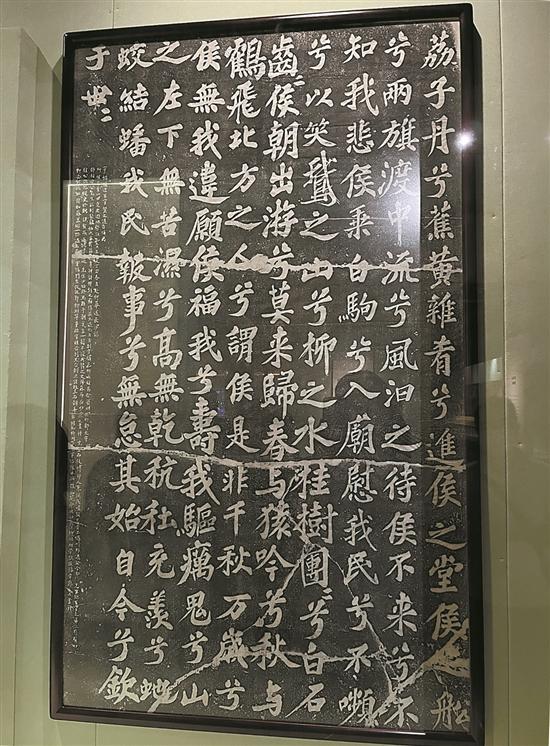A "Lizi Stele" original da Dinastia de Song no Templo Ancestral de Liuhou em Guangxi contém a inscrição das escrituras de Liu Zongyuan em Lingnan. O poema foi escrito por Han Yu para comemorar Liu Zongyuan, e a caligrafia foi escrita por Su Shi no seu auge - conhecida como a "Estela com Três Maravilhas" por estudiosos de todas as idades. Actualmente, as suas fricções originais estão expostas na Exposição Especial de Pintura e Caligrafia das Dinastias Song e Yuan, no Museu de Guangdong. O Professor Peng Yuping, chefe do Departamento de Literatura Chinesa da Universidade Sun Yat-sen, interpretou a profunda conotação da "Estela com Três Maravilhas" a partir das perspectivas da história, literatura e caligrafia.

The original "Lizi Stele" of the Song Dynasty in Liuhou Ancestral Temple in Guangxi contains the inscription of Liu Zongyuan's deeds in Lingnan. The poem was written by Han Yu to commemorate Liu Zongyuan, and the calligraphy was written by Su Shi in his prime - known as the "Stele with Three Marvels" by scholars of all ages. At present, its original rubbings are on display at the Special Exhibition of Painting and Calligraphy from the Song and Yuan Dynasties at the Guangdong Museum. Professor Peng Yuping, head of the Department of Chinese Literature at Sun Yat-sen University, has interpreted the profound connotation of the "Stele with Three Marvels" from the perspectives of history, literature, and calligraphy.
在广西柳侯祠内的宋代原件《荔子碑》,碑文载柳宗元在岭南事迹,诗文为韩愈纪念柳宗元所作,书法出自苏轼盛年之手——被历代文人称为“三绝碑”。当下,其原刻拓片正在广东省博物馆《绘冠南天——粤藏宋元书画特展》中展出。中山大学中文系系主任彭玉平教授从历史、文学、书法等角度解读“三绝碑”的深厚内涵。









